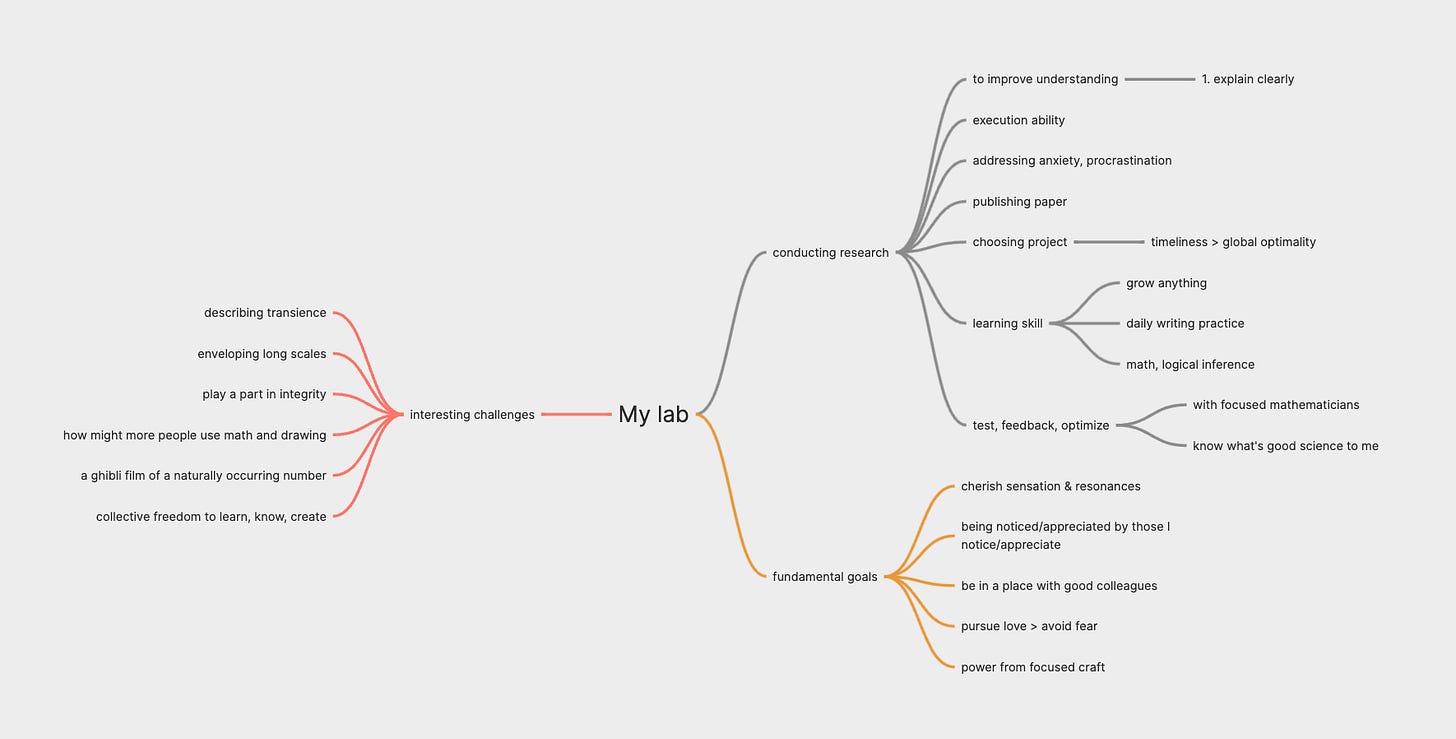Inspired by Weiwei, I have been writing week notes to review goals and encourage execution. The title is “δx” because I am trying to take small steps (one hour a day to read/write/code/grow). I am thankful for Seth for advice on the craft of figure-making, Audrey for advice on mentor-searching, Mark for giving insider perspective, and Ellie Shreya Leo Yutaro Mom for accepting my current ambiguity and pushing me to do stuff.
Reading Notes
I’ve been reading to compile a literature review soon. The ongoing list and annotations are in biophysics reading list.
Tang, W., Das, A., Pegoraro, A.F. et al. Collective curvature sensing and fluidity in three-dimensional multicellular systems. Nat. Phys. 18, 1371–1378 (2022). https://doi.org/10.1038/s41567-022-01747-0
How do cells sense the curvature of the underlying surface? At the groups of cells level, curviness of the membrane increases the bending energy cost of cells moving, favoring groups of cells packing and locking each other in. (A related question is: How do proteins sense the curvature of the cell membrane? Wade Zeno and others hypothesize that the higher entropy of disordered regions in proteins gets constrained by more curved membranes, in turn binds to partners.)
Klotsa, D. (2019). As above, so below, and also in between: mesoscale active matter in fluids. Soft matter, 15(44), 8946-8950.
This is a review on soft living matter. “Soft” means the properties and structures are determined by entropy. “Living matter” means considering the processes of life — replication, movement and integrity — as dynamic changes driven by energy. I’m particular struck by the observation that “the flocks of organisms are themselves each made of tissues of cells.” From spending time watching animal groups last year to protein assemblies now, I see the fractal-like repetition of patterns, such as the sudden transition between swarming and order, across the scales. Is there a meaningful explanation?
Here are some other references I have been collecting and annotating:
Field Photos
Sorry I’m posting figures even though I’m not fully proud of them yet.




Questions
can a blind person do developmental biology? (the field relies so much on qualitatively interpreting microscope images.)
what sound do cells make when they divide? (sound is just a disturbance of the medium.)
how do scientists work with dynamic models of invisible concepts?



